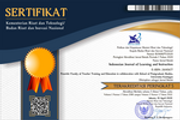TEXTUAL REDUCTIONISM: FROM ENGINEERING RESEARCH ARTICLES (RAs) TO THEIR SUBSEQUENT POSTERS
Abstract
Converting a Research Article (RA) into a poster is a complex, recursive reading-writing activity that can impose an overwhelming cognitive load on designers. This study contributes to a growing body of research which emphasizes the importance of designing clear academic posters. It proposes practical guidelines for academic poster design and contents. A total of 20 published RAs with their subsequent posters from the engineering field were analyzed to see what elements of the RAs were modified, changed or totally removed. Several software packages were used for this investigation. A correlation was found between the length of the RA and the amount of RA contents retained in the poster. Analyses also show that function words, the literature review section and the list of references were the main victims of heavy reductionism. However, comparisons of RAs and their related posters revealed that visuals were the least sacrificed textual items in the reduction process. It is proposed that poster contents may reflect the original RA structure with more emphasis allotted to new information in the research. Such a practice will help reduce the limitations that the poster space may impose on the contents, allow the poster presenter more freedom to use a bigger font size, and most importantly; interact and engage actively with the interested audience. The research concludes with limitations and recommendations for further research.
Full Text:
PDFReferences
Alami, M., Sabbah, M., & Iranmanesh, M. (2013). Male-female discourse difference in terms of lexical density. Research Journal of Applied Sciences, Engineering and Technology, 5(23), 5365-5369.
Brandt, C. (2009). Powerpoint or posters for EAP students’ presentation skills development? In T. Stewart (Eds.), Insights on Teaching Speaking in TESOL. Virginia, USA: TESOL International Publications Inc.
Cianflone, E. (2011). A preliminary description of abstracts and poster presentations in food sciences. English for Specific Purposes World, 10(32).
D’Angelo, L. (2011). Academic posters across disciplines: A preliminary study. University of Reading Language Studies Working Papers, 3, 15-28.
D’Angelo, L. (2010). Creating a framework for the analysis of academic posters. University of Reading Language Studies Working Papers, 2, 38-50.
El-Sakran, T. M., & Prescott, D. L. (2013). Poster presentations improve engineering students’ communication skills. International Journal of Education and Practice, 1(7), 75-86.
El-Sakran, T. M., & Prescott, D. L. (2015). Schema for poster design, defense and assessment. The Journal of Teaching English for Specific and Academic Purposes, 3(1), 101-114.
Ferguson, E. S. (1992). Engineering and the mind's eye. Cambridge, Mass: MIT Press.
Gee, J. P. (2011). An introduction to discourse analysis: Theory and method (3rd ed.). New York: Routledge.
Gordon, M., Darbyshire, D., Aamir Saifuddin, A., & Vimalesvaran, K. (2013). Limitations of poster presentations reporting educational innovations at a major international medical education conference. Med Educ Online, 18(1). Retrieved from http://dx.doi.org/10.3402/meo.v18i0.20498
Gregori-Signes, C., & Clavel-Arroitia, B. (2015). Analyzing lexical density and lexical diversity in university students’ written discourse. Procedia-Social and Behavioral Sciences, 198, 546-556.
Hand, H. (2010). Reflections on preparing a poster for an RCN conference. Nurse Researcher, 17(2), 52-59.
Hess, G. R., Tosney, K. W. & Liegel, L. H. (2009). Creating effective poster presentations: AMEE guide. Medical Teacher, 31(4), 319-321. doi:10.1080/01421590902825131
Johansson, V. (2008). Lexical diversity and lexical density in speech and writing: a developmental perspective. Lund University, Dept. of Linguistics and Phonetics Working Papers, 53, 61-79.
Markel, M. H. (1994). Writing in the technical fields: A step-by-step guide for engineers, scientists, and technicians. Piscataway, New York: IEEE Press Inc.
Rezaeian , M., Rezaeian, M., & Rezaeian, M. (2017). How to prepare a poster for a scientific presentation. World Family Medicine/Middle East Journal of Family Medicine, 15(7), 133-135.
Rowe , N., & Ilic, D. (2009). What impact do posters have on academic knowledge transfer? A pilot survey on author attitudes and experiences. BMC Medical Education, 9(71). Retrieved from https://doi.org/10.1186/1472-6920-9-71
Swales, J. M. (1990). Genre analysis: English in academic and research settings. Cambridge: Cambridge University Press.
Swales, J.M., & Feak, C. (2000). English in today’s research world: A writer’s guide. Ann Arbor: Michigan University Press.
Taha, S. M., & El-Sakran, T. M. (2014). Guidelines for understanding and using visuals in business texts. The Journal of Teaching English for Specific and Academic Purposes, 2(3), 379-428 .
Tomita, K. (2017). Visual design tips to develop an inviting poster for poster presentations. TechTrends, 61, 313–315.
Wang, X., & Cho, K. (2010). Computational linguistic assessment of genre differences focusing on text cohesive devices of student writing: Implications for library instruction. The Journal of Academic Librarianship, 36(6), 501-510.
DOI: https://doi.org/10.25134/ijli.v2i2.1904
Refbacks
- There are currently no refbacks.
Copyright (c) 2019 Indonesian Journal of Learning and Instruction

This work is licensed under a Creative Commons Attribution-NonCommercial-ShareAlike 4.0 International License.

